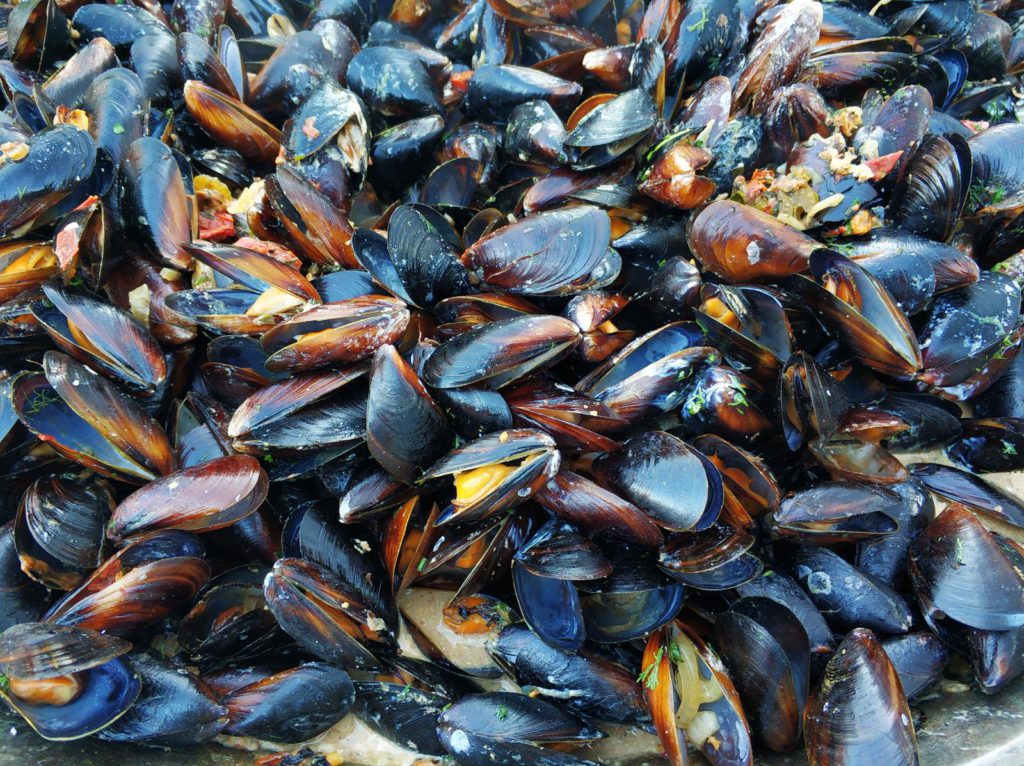Composting is a sustainable and environmentally friendly way to reduce waste and nourish the soil. As more individuals and communities embrace composting, questions arise about what can and cannot be composted. This often comes up with things left over from a good meal. For example, after a good seafood dinner, you might be pressed to ask if you can compost mussel shells. We will look at the benefits of composting mussel shells, along with some practical considerations to remember.
Yes, you can compost mussel shells. Let’s consider why you’d want to and some of the considerations before you compost mussel shells.

The Environmental Benefits
When you compost mussel shells, it can have several environmental benefits. Firstly, composting shells diverts them from ending up in landfills, where decomposing takes decades. By composting shells instead, we reduce the amount of waste sent to landfills, thereby minimizing greenhouse gas emissions and environmental pollution.
Secondly, mussel shells are a rich source of calcium carbonate. Composting shells allows the calcium to be broken down and released into the soil, providing valuable nutrients for plants. Calcium is essential for cell growth and is vital in strengthening plant structures, such as roots and stems. Composting mussel shells can enhance soil fertility and promote healthier plant growth.
Practical Considerations
While composting mussel shells offers environmental benefits, there are a few practical considerations to consider. Most of these will look familiar as they are similar to composting other items:
- Shell Preparation – Mussel shells are naturally sturdy and can take longer to break down compared to other compostable materials. To accelerate decomposition, it is advisable to crush or grind the shells into smaller pieces before adding them to the compost pile. This will help speed up the decomposition process and ensure the shells integrate well with other organic matter.
- Balance and Odor – Mussel shells are high in carbon content, which means they are considered a “brown” or carbon-rich material in composting. Mixing mussel shells with “green” or nitrogen-rich materials, such as kitchen scraps or grass clippings, is essential to maintain a healthy compost balance. Properly balanced compost helps prevent odor issues and promotes efficient decomposition.
- Compost Placement – Composting mussel shells in a backyard compost pile or bin is generally feasible. However, due to their slow decomposition rate, it is recommended to use compost-containing mussel shells in non-food growing areas, such as flower beds or landscaping. This ensures the shells have ample time to break down fully before being used on edible plants. Otherwise, to use them in your garden, you may need to leave them in your compost for quite a while.
- Vermicomposting – Another option is vermicomposting, where red worms are used to break down organic matter. Red worms can consume mussel shells over time, aiding in their decomposition. If you have a vermicomposting system, consider adding crushed mussel shells in moderation and monitor the progress to ensure the worms can handle the load.
- Time – It may take a while for your shells to decompose. If you have large pieces left over when you are ready to add your compost to the soil, remove them and place them back for more composting.
Composting mussel shells can be eco-friendly, diverting waste from landfills and enriching the soil with valuable nutrients. While mussel shells take longer to decompose than other compostable materials, they can be successfully incorporated into a composting system with proper preparation, balance, and placement. Consider crushing or grinding the shells, balancing them with nitrogen-rich materials, and using the resulting compost in non-edible gardening areas. Composting mussel shells contributes to a more sustainable and nutrient-rich environment for our plants and gardens.
